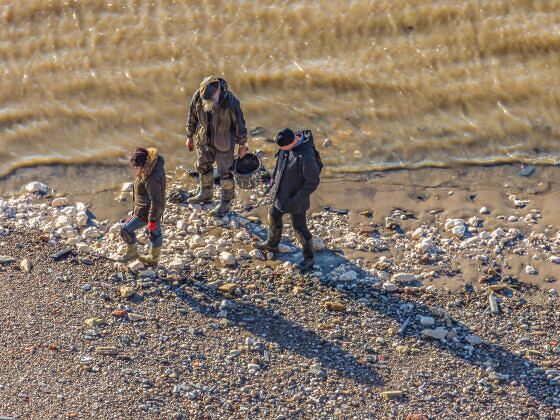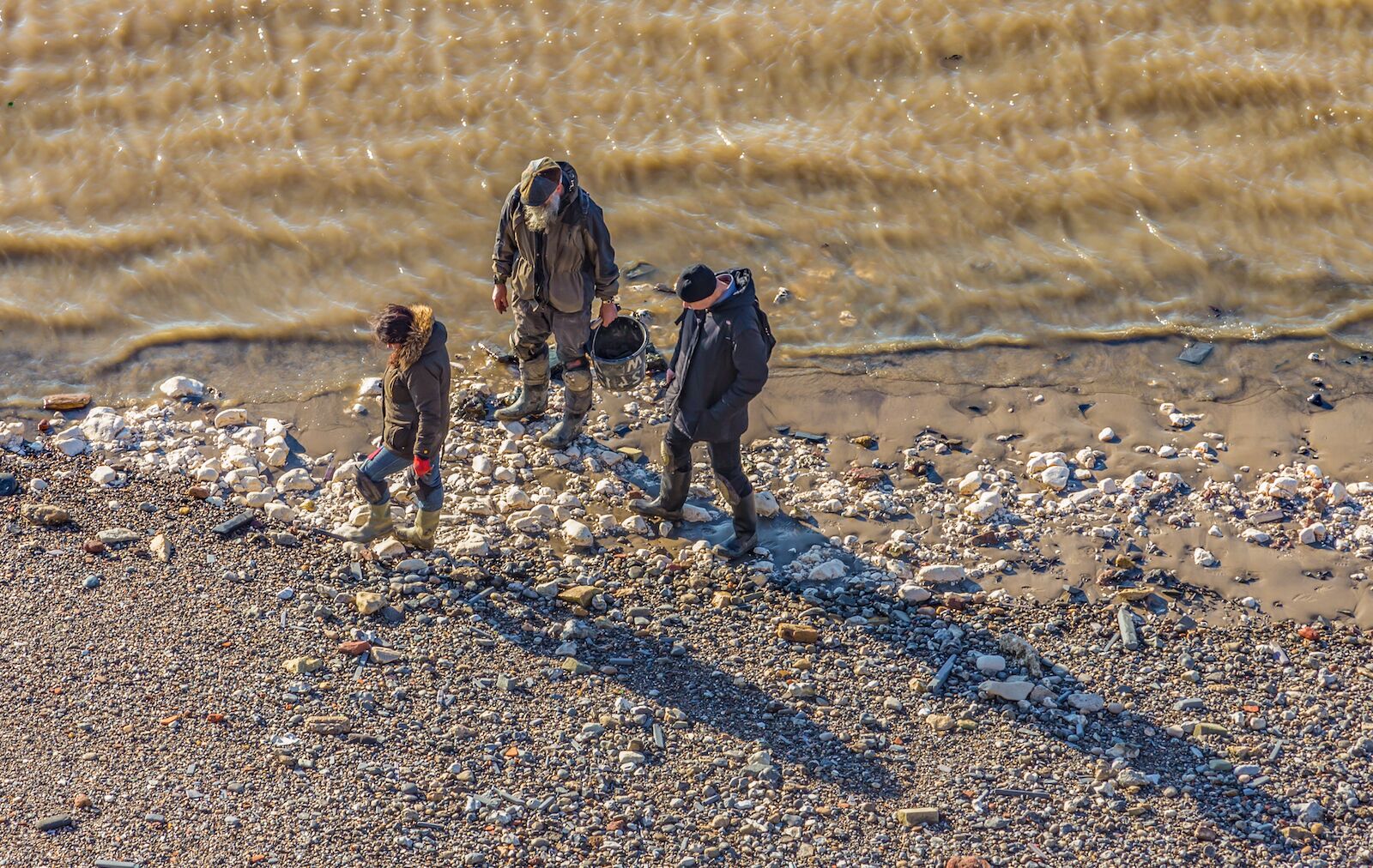You don’t need to be a bonifide archeologist with college degrees to find treasures. In the United States, you can easily unearth gemstones and fossils if you know where to go, and in the UK, you can dig up all sorts of historical artifacts right in the capital city if you don’t mind wading through some mud and getting your hands very dirty to find them. The practice is called mudlarking, and it’s existed for several centuries.

You Can Dig Up Archeological Treasures While Mudlarking in the Heart of London
Mudlarking is the practice of searching for artifacts and other items in the mud of riverbeds or drained reservoirs. It’s mostly associated with the banks of the Thames in London, also known as the Thames foreshore. Because the area around the Thames river has been inhabited for over 8,000 years, with London (then known as Londinium) becoming a port and trading center in the first century, there are a multitude of historical remains to be found on the riverbanks at low tide.
How long have people been mudlarking in London?

Photo: username/Shutterstock
Mudlarking has existed for several hundreds years. The Museum of London explains that in the 18th and 19th centuries, poor Londoners would scavenge items from the mud to sell in order to survive. Today, mudlarkers comb the banks of the Thames as a hobby, not a necessity, although some have made it their career by writing books about the practice and creating YouTube channels where they show the process and their finds, some of which are spectacular. Lara Maiklem is one of them. Maiklem is a mudlarking specialist who’s written several books on the topic (“Mudlarking” and “A Field Guide to Larking”), made many appearances on TV, and takes part in speaking events. Well known mudlarking YouTubers include Si-finds Thames Mudlark and Nicola White mudlark – Tideline Art.
What can you find while mudlarking on the Thames foreshore?
You can find just about anything in the mud of the Thames banks, from prehistoric skulls to modern trash. Mudlarkers often find old glass bottles and bottle stoppers, broken or intact ceramic items, coins, buttons, Victorian clay pipes, religious statuettes, and more among a huge variety of items that spans centuries, uses, values, and conditions.
A spokesperson for Port London Authority, says over email that all the objects found that could be of archeological interest must be reported to the Portable Antiquities Scheme Finds Liaison Officer at the Museum of London. If you’ve been mudlarking and think you have dug up a treasure, you need to contact the coroner for the district in which the object was found within 14 days of the find. “In practice many finders report treasure via the Finds Liaison Officer, which is also acceptable,” she explains.
If you find a weapon or anything that is illegal, you must report it to the police immediately. Mudlarkers, including those with YouTube channels, commonly find guns and various bladed weapons which they properly report to the authorities.
Familiarize yourself with the Treasure Act and the Portable Antiquities Scheme’s advice for finders before you start mudlarking. The Treasure Act code of practice contains a directory of coroners.
Can I take my finds from mudlarking on the Thames foreshore home?
It depends, but in general you can’t just take off with your finds. A PLA spokesperson explains that “the export of archaeological objects from the UK to any destination requires a UK license if the object is more than 50 years of age. The type of license required will depend on where the object was found and, in some cases, the value of the object.” By reporting your finds to the Portable Antiquities Scheme Finds Liaison Officer at the Museum of London, you’ll obtain guidance on how to proceed.
What do I need to do to become a mudlarker?
First and foremost, you need a permit, which you can obtain by submitting an application to the Port London Authority. Note that the issuance of new permits to go mudlarking is currently on pause as the Port London Authority evaluates the impact of mudlarking on the foreshore. A PLA spokesperson notes that an announcement on the issuance of permits will be made later in the year.
Once you’ve obtained a permit to go mudlarking, you need to equip yourself with the following gear:
- A pair of solid, waterproof, and grippy boots or wadders
- A pair of gloves to protect your hands and keep them warm. The Port London Authority recommends elbow-length, thick rubber gloves
- A small trowel or shovel
- Bags to collect your finds (those that can hook on a belt are more practical)
- A waterproof jacket
- A spray bottle filled with water to lightly clean up whatever you dug up, and a cloth for the same purpose.
Mudlarkers spend a lot of time on their knees looking for objects, and some like to wear knee pads, but it’s a matter of preference. The same goes for metal detectors — you don’t necessarily need them to find objects of historical value, but many mudlarkers have them.
Is mudlarking dangerous?
Mudlarking can be hazardous if you don’t pay attention to the tide. Just like the ocean, the Thames experiences two high tides and two low tides per day, every six hours or so. Mudlarking is done at low tide, when items are exposed in the mud, but mudlarkers need to be very aware that the water levels will inevitably go up and they may be trapped in the river’s strong currents and cold water if they don’t pay attention. Also, mudlarkers need to be aware of the daylight hours; being stuck on the foreshore, with no flash light to find the ladder, stairs, or ramp to go back on the road is a very dangerous practice. Wearing the proper gear will prevent falls, cuts, and more.
Is London the only place where you can mudlark?
Mudlarking is not limited to London and the Thames river, it can be done on the banks of any tidal rivers or around drained reservoirs. The Northern Mudlarkers, a mother-and-daughter mudlarking duo with a YouTube channel, look for items of historical significance and value in Scotland, for example.